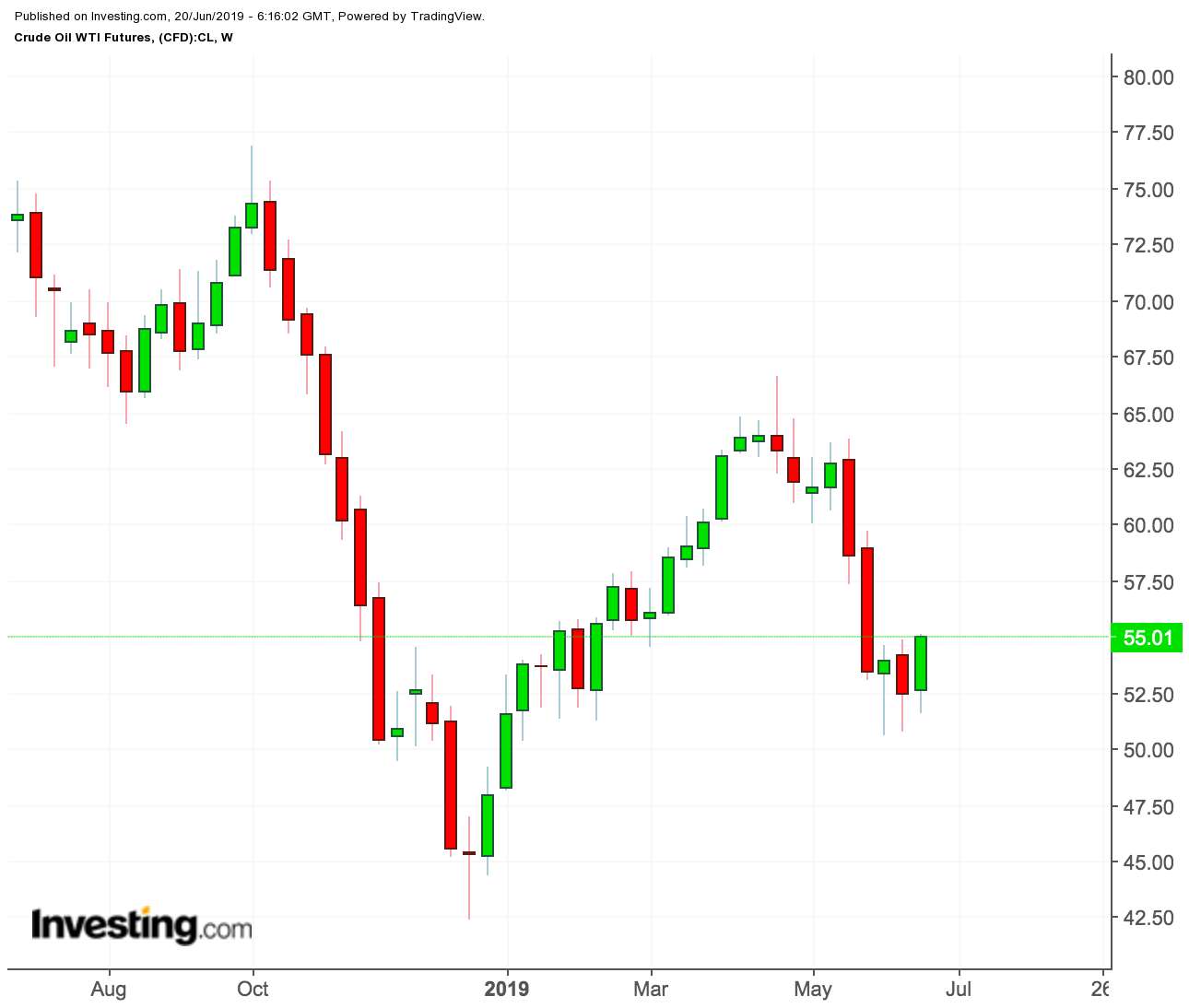Oil prices jumped about 4% last Thursday, June 13, as news broke that two tankers were attacked in the Gulf of Oman, leaving one of them in flames. Over the course of the day, prices dropped back down, nearly returning to their pre-attack levels. CNBC even had to amend the headline of its story several times during the day to reflect the falling prices, which seemed to be a surprise.
In other times and under other circumstances, an attack like this on tankers near the Persian Gulf would have caused oil prices to rise and to remain elevated for at least a little while. But this was the second such attack on tankers in the region in a month and the second time oil prices barely moved in response. Why are oil markets continuing to discount clear threats to the integrity of oil transportation in the most important waterway for oil transport?

Primarily, it is because oil traders are much more concerned about a perceived decline in demand growth for oil. In other words, traders are concerned that in the coming months oil consumption may not increase as much as was previously expected. This perceived weakness is based on a fear of slowing economic activity and the impact of the trade war between the United States and China.
Traders know that other traders are focused on indicators of oil requirements, which amplifies the impact that perceived demand weakness has on the market. Essentially, traders think other traders are more concerned about demand problems than supply problems, so the fear of demand problems becomes the issue.
A clear indication that markets are focused almost exclusively on global economic activity and the trade issues was seen on Tuesday morning when oil markets jumped in response to a tweet by U.S. President Donald Trump that he had a good phone conversation with President Xi and that the two would be meeting at the G20 conference. By the end of the day oil prices had their largest daily increase since January.
U.S. Oil Production Swells Supply
The second reason that oil prices aren’t reacting to the threat to oil tankers in the Persian Gulf is oil production from the United States. According to the EIA, oil production from the United States averaged 12.2 million bpd last week. And America’s oil imports from Saudi Arabia and Iraq are also down 26% and 28% respectively from last year.
This means the U.S. is not dependent on the security of oil tankers in the Persian Gulf. Due, in large part, to domestic oil production in America, it explains why WTI, in particular, is much less sensitive to the geopolitical situation in the Persian Gulf right now. Moreover, there is so much oil production—especially from the U.S.—that there is a general perception that supply is not a concern, despite issues in the Middle East, Venezuela, Africa and Russia.
One event in the Persian Gulf that might make oil prices rise is a potential U.S.-Iran military engagement. Oil prices started to climb on June 13 when U.S. Secretary of State Mike Pompeo said that the U.S. had intelligence proving that Iran was behind the attacks. But when he said the U.S. would maintain its current diplomatic and economic policies towards Iran, prices backed down. Perhaps U.S. military engagement against Iran could be the threshold for oil price movement, but that may never happen.
Editor's note: Various news outlets, including the U.K.'s Guardian and the Wall Street Journal, report this morning that Iran has shot down a U.S. drone in the strait of Hormuz. Iran's Revolutionary Guards claim it was a U.S. 'spy drone' flying in its airspace, while the U.S. military has confirmed the downing of a drone, but says it occurred in international airspace, according to the reports.
